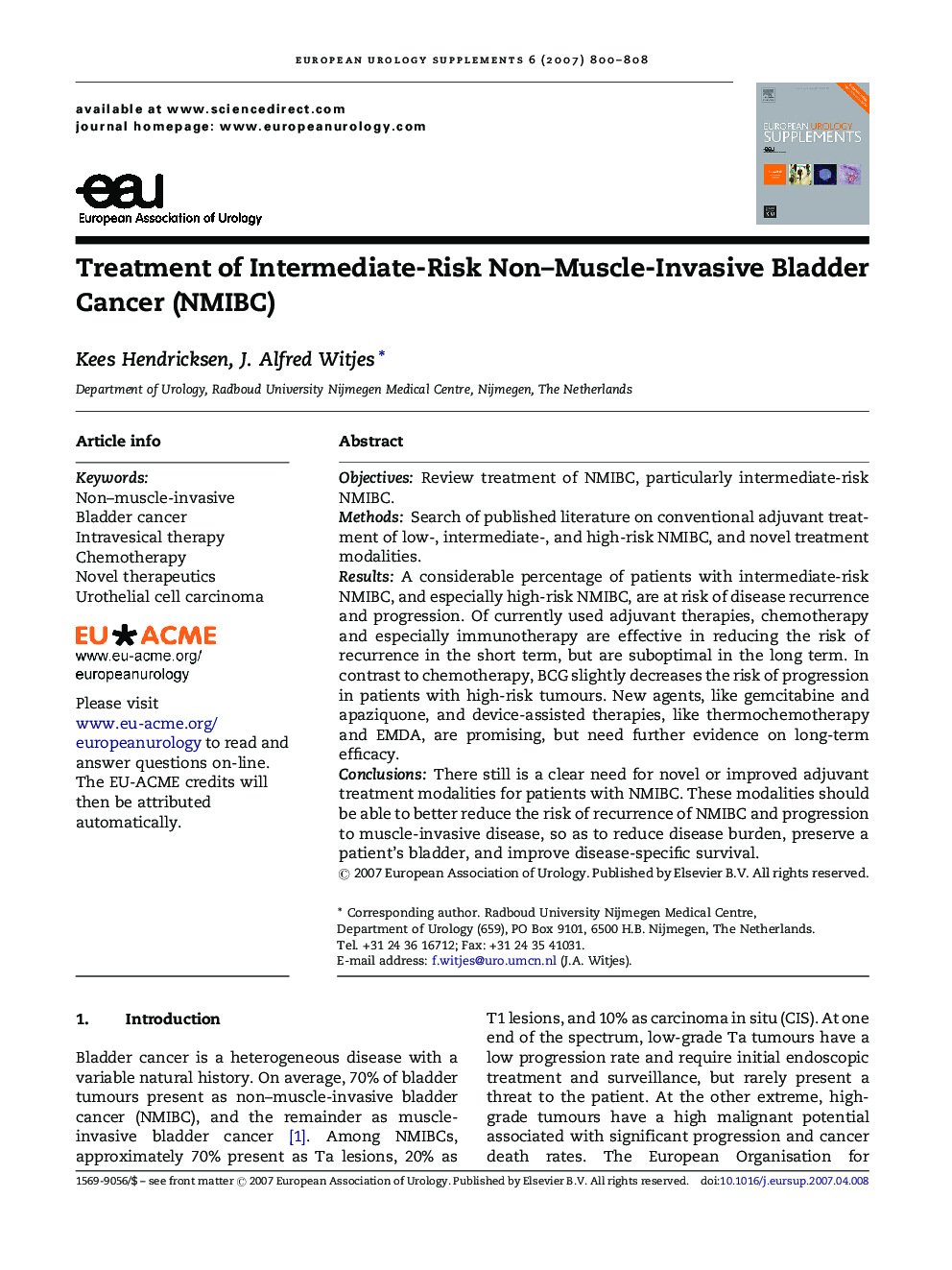| Article ID | Journal | Published Year | Pages | File Type |
|---|---|---|---|---|
| 3934873 | European Urology Supplements | 2007 | 9 Pages |
ObjectivesReview treatment of NMIBC, particularly intermediate-risk NMIBC.MethodsSearch of published literature on conventional adjuvant treatment of low-, intermediate-, and high-risk NMIBC, and novel treatment modalities.ResultsA considerable percentage of patients with intermediate-risk NMIBC, and especially high-risk NMIBC, are at risk of disease recurrence and progression. Of currently used adjuvant therapies, chemotherapy and especially immunotherapy are effective in reducing the risk of recurrence in the short term, but are suboptimal in the long term. In contrast to chemotherapy, BCG slightly decreases the risk of progression in patients with high-risk tumours. New agents, like gemcitabine and apaziquone, and device-assisted therapies, like thermochemotherapy and EMDA, are promising, but need further evidence on long-term efficacy.ConclusionsThere still is a clear need for novel or improved adjuvant treatment modalities for patients with NMIBC. These modalities should be able to better reduce the risk of recurrence of NMIBC and progression to muscle-invasive disease, so as to reduce disease burden, preserve a patient's bladder, and improve disease-specific survival.
